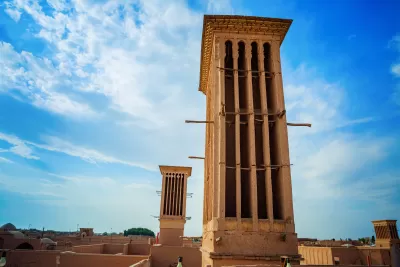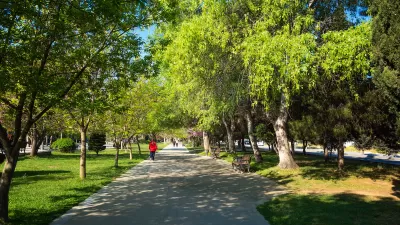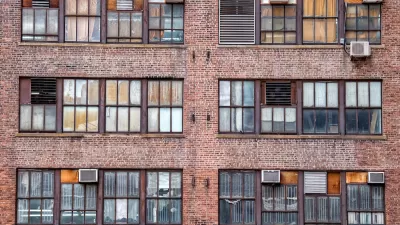Cooling mechanisms built into traditional architecture offer lessons for U.S. builders as heat waves grow more intense.

In an article in Time, Anna Gordon describes the centuries-old Middle Eastern architectural cooling techniques that could help U.S. households reduce their reliance on air conditioning, which “is believed to cause 1,950 million tons of CO2 emissions per year around the world, accounting for almost 4% of global carbon emissions.”
John Onyango, a professor at the University of Notre Dame School of Architecture, told Gordon, “Barajeels have passively cooled buildings for centuries. These wind towers can lower temperatures by up to 50 degrees Fahrenheit depending on how they are designed and the levels of wind.” These devices “work by funneling hot winds from outside to the lower floors of the building or even underground, where the air is cooled naturally. The cooled air is then released inside the building. So long as there is wind flowing, the barajeel works without ever requiring electricity.”
Other ways to improve air flow and cooling include chimney-like structures in tall buildings and high dome-shaped roofs. Gordon also points out the energy efficiency of many traditional Middle Eastern building materials. “Unlike the production process for steel or concrete, the production of stone and mud bricks does not lead to large amounts of carbon emissions.”
FULL STORY: The U.S. Should Ditch AC and Use Middle Eastern Techniques to Cool Its Cities

Study: Maui’s Plan to Convert Vacation Rentals to Long-Term Housing Could Cause Nearly $1 Billion Economic Loss
The plan would reduce visitor accommodation by 25,% resulting in 1,900 jobs lost.

North Texas Transit Leaders Tout Benefits of TOD for Growing Region
At a summit focused on transit-oriented development, policymakers discussed how North Texas’ expanded light rail system can serve as a tool for economic growth.

Using Old Oil and Gas Wells for Green Energy Storage
Penn State researchers have found that repurposing abandoned oil and gas wells for geothermal-assisted compressed-air energy storage can boost efficiency, reduce environmental risks, and support clean energy and job transitions.

Santa Barbara Could Build Housing on County Land
County supervisors moved forward a proposal to build workforce housing on two county-owned parcels.

San Mateo Formally Opposes Freeway Project
The city council will send a letter to Caltrans urging the agency to reconsider a plan to expand the 101 through the city of San Mateo.

A Bronx Community Fights to Have its Voice Heard
After organizing and giving input for decades, the community around the Kingsbridge Armory might actually see it redeveloped — and they want to continue to have a say in how it goes.
Urban Design for Planners 1: Software Tools
This six-course series explores essential urban design concepts using open source software and equips planners with the tools they need to participate fully in the urban design process.
Planning for Universal Design
Learn the tools for implementing Universal Design in planning regulations.
Ascent Environmental
Borough of Carlisle
Institute for Housing and Urban Development Studies (IHS)
City of Grandview
Harvard GSD Executive Education
Toledo-Lucas County Plan Commissions
Salt Lake City
NYU Wagner Graduate School of Public Service





























